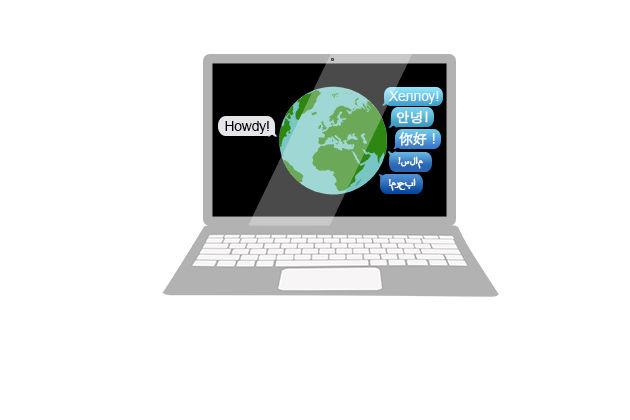The ability to read or watch news in any language is realized in some ways through a partnership with A&M’s Communication Department and the Pentagon.
Communication professor Randy Kluver was approached by the Pentagon in 2008 about a media translating software used by the Department of Defense. The goal was to pilot their program as a language learning tool at a few universities, but the schools like West Point and the Naval Academy initially turned down the pitch.
Texas A&M was the first, and so far only, university to gain access to The Media Monitoring System, an automated software that analyzes real-time news broadcasts and social media posts and translates them to English.
The system transcribes foreign news TV broadcasts and web posts and displays an English translation next to the foreign language text after a few-second delay. This capacity has become an important resource in global media analysis, allowing researchers to study the way people communicate all over the world.
The collected media is archived for at least one year. The database contains the first mention of the protests in Tunisia that started the Arab Spring and the 2011 uprisings in Cairo that were reported as riots in Western media, but were correctly reported by Al Jazeera as attacks, Kluver said. Currently, researchers are analyzing Middle Eastern media to gain information about the Islamic State group, also known as ISIS.
“We’re engaged in an ongoing study of ISIS,” Kluver said. “We’re looking primarily at how Arabic-speaking Twitter users respond to ISIS.”
Kluver said MMS is used for education, instruction and research for both the Pentagon and in academics.
“We, myself and some graduate students, have been working to develop academic research papers using this tool,” Kluver said. “Just really helping people better understand global media.”
Programs of this kind could lessen the need for translators, as the current system can translate Arabic, Chinese and Russian broadcasts as well as Farsi and Korean websites, Kluver said. Although the translations aren’t perfect, the software receives a significant upgrade every year and the technology continues to improve. Kluver said universities like Harvard and West Point are now eager to work with the Department of Communication on projects that involve this system and are partnering with A&M to do global media research.
“One of the issues in media research is that most of it is U.S. based. A lot of people aren’t looking at trends in other countries and doing real analysis of that data,” said Jacquelyn Manly, graduate researcher. “So it’s exciting in that sense. It’s also challenging because there’s not really an established precedent — it hasn’t been done.”
The system is often used by researchers in the Department of Communication, as well as Arabic language instructors, the Corps of Cadets and classes in the Bush School. Kluver’s international communication class uses the system for projects where they analyze media in other countries.
“The MMS is an incredible piece of technology,” said Hannah Conrad, a telecommunication senior in Kluver’s class. “The ability to track and translate online media information is a tool that is both frightening and enlightening.”










